The electric scooter market is growing in numbers every week, and there are new players joining the fray. This segment is likely to be the first to completely replace the traditional petrol scooter market; possibly eliminating the latter within the next few years.
The quintessential commuter scooter buyer is agnostic to what powers the two-wheeler and if it can be an electric scooter that also saves the person some money during these days of high fuel prices, then why not! The adoption of e-scooters is catching on, not just in urban centres, but also in tier-3 and tier-4 towns of the country. And it is so far in, that brand loyalties are beginning to grow amongst buyers. Contrary to the passenger car market, the e-scooter segment is dominated by newcomers in the industry and start-ups, with the established auto brands mostly following suit.
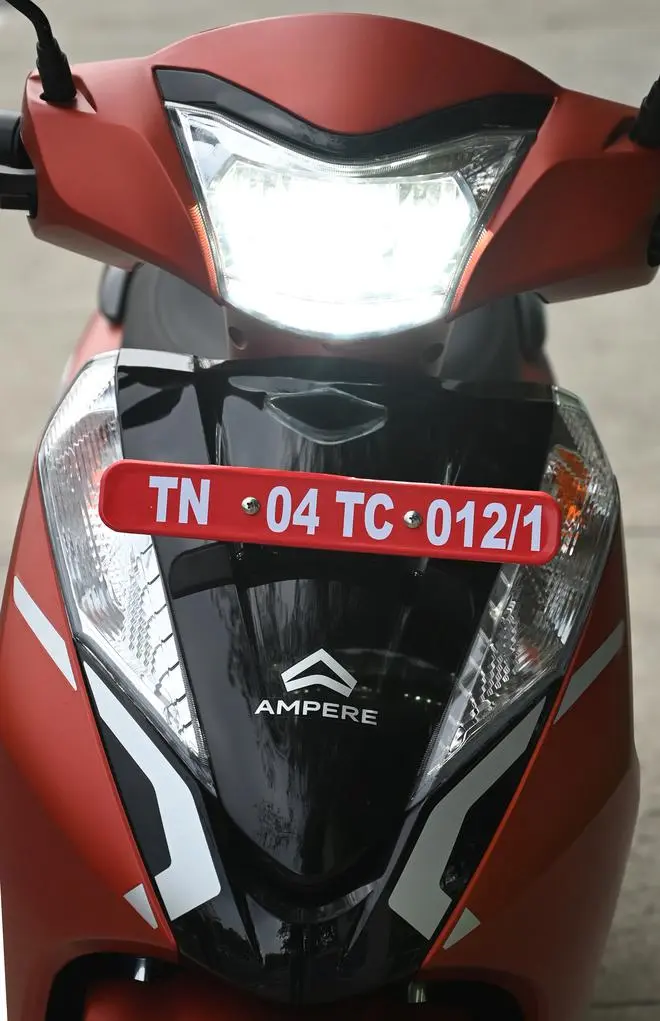

Ampere is not exactly a newbie; the brand has had two e-scooters in the market already. But the company Greaves Electric Mobility is still a relatively recent entrant into the commuter electric two-wheeler space. So, what’s with the new third e-scooter from Ampere? Where does the new Primus fit in? This is a fully loaded premium e-scooter with a large battery pack, all the comfort and connectivity features that buyers expect and an above average riding range. It is priced just under ₹1.5 lakh and will be competing with the top of the stack e-scooters. I took the Primus out on a spin and here’s what I thought of this new e-scooter.

Design
The Primus’s design is conventional when viewed from a distance. The handlebar-mounted headlamp makes the design seem even more traditional, though Indian scooter buyers love the prospect of the light throw being more focused because of this position. The blade-like lamp housing on the body of the Primus is just for the turn-indicators. This is a full-sized e-scooter, though in profile it may seem a tad smaller than many conventional petrol scooters. My test mule wore a dual-tone paint finish with matt ‘Royal orange’ and a mix of glossy and matt plastic contrast panels.

The digital screen offers a simple read out of the speed, tripmeter, distance to empty, battery state of charge (SoC) and even a fuel level style indication of the SOC | Photo Credit: BIJOY GHOSH
Aluminium accents for some of the highlights and badges, and matt-black aluminium alloys sort of come together to make this look like a modern e-scooter. The 3kWh battery pack sits under the floor of the Primus and is built into the frame of the scooter. The panels are in ABS plastic and get an angular, shapely symmetrical profile. The rear tapers into a clean stop/brake lamp and indicator combination unit, that is topped by a wide, usable metal cast grab handle that is powder-coated. The contoured seat is wide, sports a stitched finish and has a mildly raised section for the pillion.

The rear tapers into a clean stop/brake lamp and indicator combination unit, that is topped by a wide, usable metal cast grab handle that is powder-coated | Photo Credit: BIJOY GHOSH
Features
The electricals include LEDs for the headlamp and dual halogen bulbs for the tail-lamp. There is a LED light located in the under-seat area, which, incidentally, offers about 22-litres of storage space. Much of the space will, however, be taken up by the huge ventilated charging box and cable. The seat itself is a wide comfortable unit offering good support and is set at a height that will be suitable for most riders. The riding posture is also upright with the light handlebar offering easy handling.

As for other features, the new Ampere Primus gets a digital instrument cluster with Bluetooth connectivity. The digital screen offers a simple read out of the speed, tripmeter, distance to empty, battery state of charge (SoC) and even a fuel level style indication of the SoC. It is also programmed to offer navigation assistance and roadside assistance. The switchgear used in the Primus is probably for the most part picked out of a common parts bin, but some of them like the mode selector control switch may be unique.

The selector lets me choose between Eco, City and Power, with a corresponding change in mode showing up on the digital screen. The floor of the Primus is a shade longer and wider than average for the segment and offers good legroom. With bag hooks and a cellphone/ nicknacks storage slot on the opposite side of the stem lock, the e-scooter makes up for the lower than average underseat storage. The charging socket is hidden away behind a small flip-open plastic flap on the panel below the rider’s seat. Some of the plastic parts and switchgear felt fiddly and of lower quality, but overall fit and finish is good.
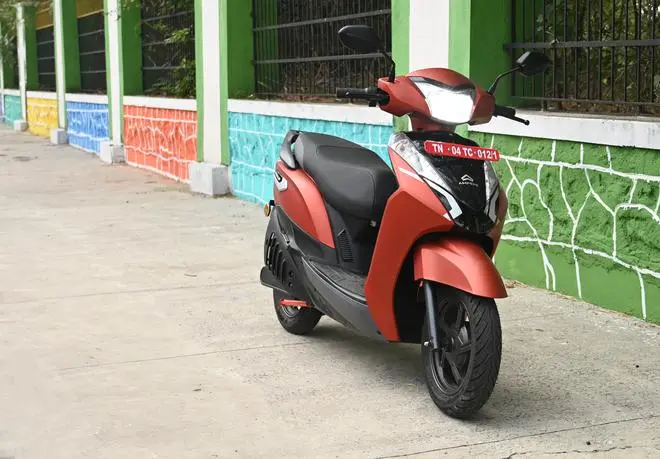
Performance
A twist of the Primus’s key in reverse allows me to unlock the seat for access to the storage. It also unlocks the stem lock and gets the e-scooter into standby mode. One has to flick the side-stand off and press the red ‘power on’ button for the ready mode. The Primus is powered by a permanent magnet synchronous motor that is mid-mounted and sends its output to the rear wheel via belt-drive.
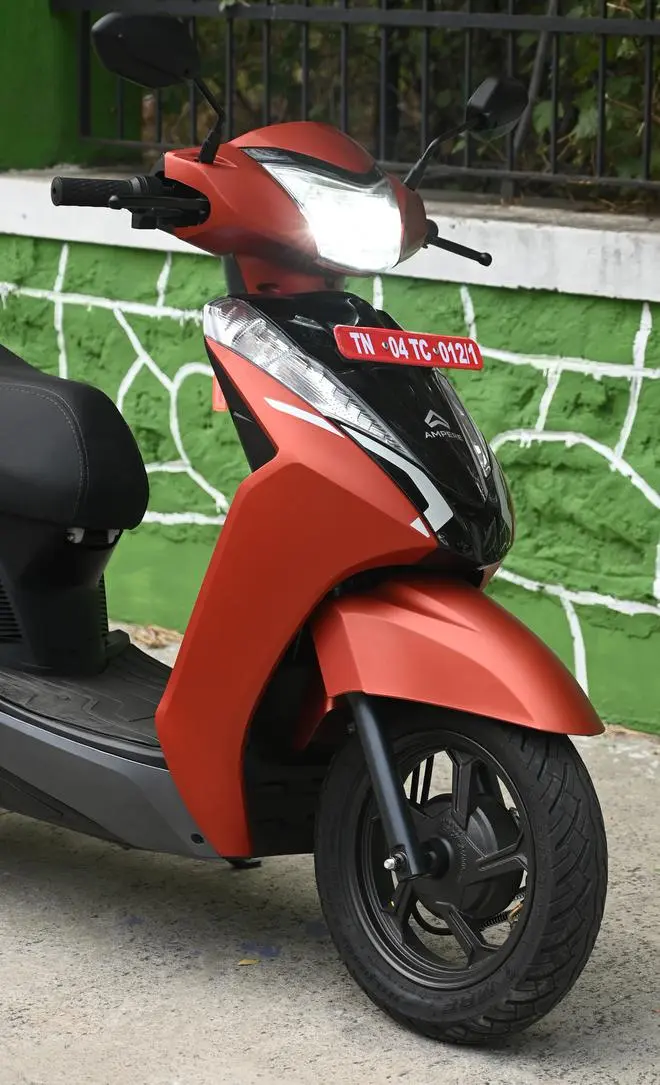
Motor power ranges from 3.4kW to 4kW. Powering the motor, the 48-volt system features a 3kW battery pack. It is good to note that the LFP (lithium ferry phosphate) battery chemistry chosen is currently considered the most stable. The built-in battery management system (BMS) has been carefully calibrated, says Ampere, with focus on getting the most out of the battery-electric powertrain. The company claims a 0-40kmph run in 4.2 seconds, a top speed of 77kmph and a ARAI-certified battery range of 107km.
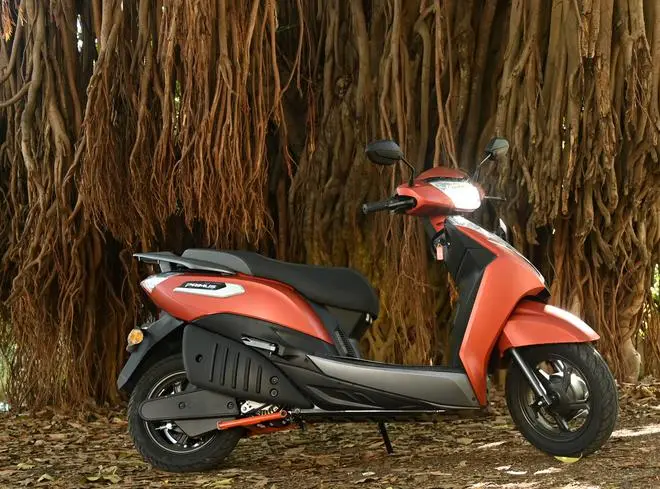
During my test rides the Primus touched a top speed of 82kms as displayed on the digital screen, but it was partially assisted by the gradient on a closed off private road. The best range that I got was about 91km with a 95 per cent SoC. Of course, the riding range is highest in Eco mode and is lowest in Power mode. Throttle response and brake energy recuperation would also be different in the three different modes. Surprisingly, regenerative braking didn’t seem as heavy or strong even in Eco mode (compared to other e-scooters like the TVS iQube). In Power mode, letting go of the throttle leads to what seems like gradual deceleration after a lengthy cruising cycle.

With a kerb weight of 130kg, the Primus is not exactly a light e-scooter. But while its acceleration isn’t exactly unexpected, the way it feels light-footed on the run does take me by surprise. On the contrary, pushing it while off the saddle is a task. Thankfully it also gets a reverse mode; will help while trying to pull out of a tight parking slot. Overall, didn’t experience any pain points during my test ride, except for one occasion when the BMS was inconsistent with its range calculation.
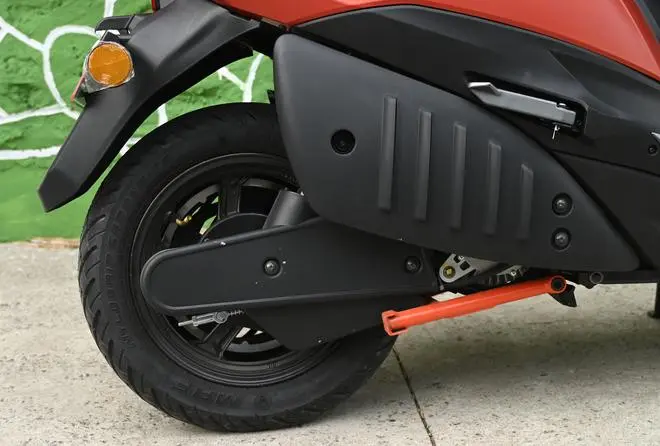
Bottom Line
Braking performance for the Primus is handled by drum brakes for the front and rear wheels, with a combi brake system included as standard for improved safety (mandatory by law now). The riding range will depend on the road conditions, riding style, and whether one is riding it alone or with a pillion. The good bit though is that the e-powertrain handles the additional weight of a pillion with ease. The Primus features dual shock absorbers at the rear.

The overall ride quality borders on being a bit over-pliant. But that is often the case with many other e-scooters and may be preferred by buyers who ride mostly within and around town. The Primus has been launched in only one fully-loaded variant and competes with the likes of the Ola S1. The Ampere Primus has been priced at ₹1.49 lakh.






Comments
Comments have to be in English, and in full sentences. They cannot be abusive or personal. Please abide by our community guidelines for posting your comments.
We have migrated to a new commenting platform. If you are already a registered user of TheHindu Businessline and logged in, you may continue to engage with our articles. If you do not have an account please register and login to post comments. Users can access their older comments by logging into their accounts on Vuukle.